We started the next day at the Minnesota Streetcar Museum. We made several trips up & down the short segment of restored tracks between Lakes Harriet and Bde Maka Ska, pronounced Be-DAY Mah-KAH-Ska. The latter lake had been called Lake Calhoun for years, but in 2018 its name was changed back to its Dakota name. More information about the naming controversy is available at the Bde Maka Ska link.
After that visit and an ample lunch, we drove to Red Wing, MN, to board our home for the next two weeks.
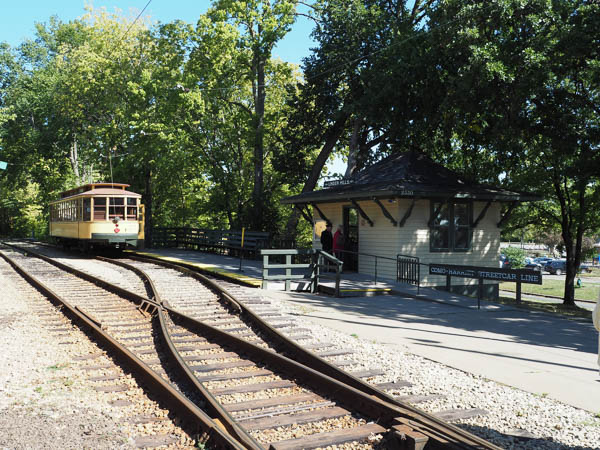
Minneapolis/St. Paul had an extensive trolley system that included the two cities and beyond. I've forgotten how many miles of track it comprised, but it was a lot.
Unlike most trolley systems, the cars were built and maintained in Minnesota. The guides told us that regular maintenance ensured that each car was essentially rebuilt every two years.
They still maintain their cars locally.
The museum is at the Lake Harriet terminus of the line.
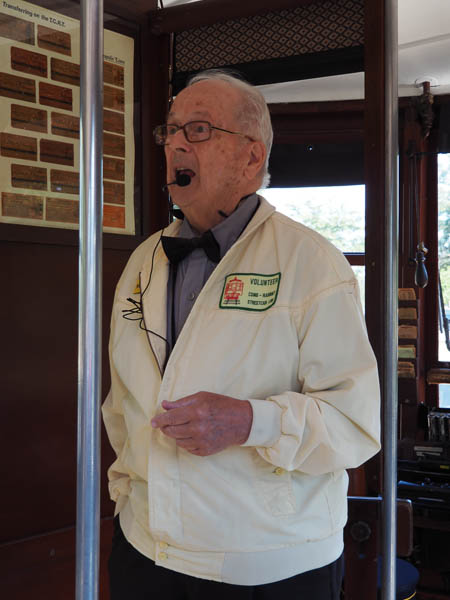
This docent, one of two who drove the car and presented its history, was enthusiastic about his work. He had ridden the cars in his youth. Although the many children who visit the museum are enthusiastic as well, they don't grow up having the memories of the system and don't volunteer to maintain it.
When the system was fully functional, some of the cars could reach speeds of 50-60 mph on the suburban runs.
As automobiles became popular, they competed with the trolleys for space on the roadways, slowing them down and causing delays. Ridership declined and the system was shut down in the 1950s, as were so many nationwide.
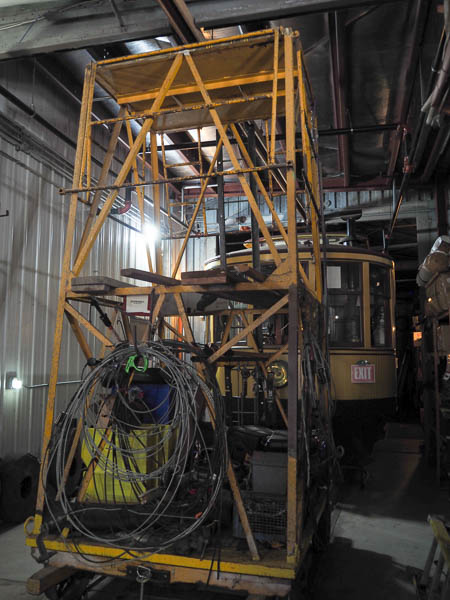
In addition to riding the rails we visited the maintenance shop. The term "car barn" dates from the days when streetcars were pulled by horses. Each horse (or team of horses) could only make one or two runs a day, so relays of horses were kept in the barns when off duty.
This contraption is used to maintain the lines that supply the electricity to run the cars. It can be rolled to a trouble spot and carries the tools and materials needed for repairs. The workman has a built-in scaffold to reach the overhead wires.
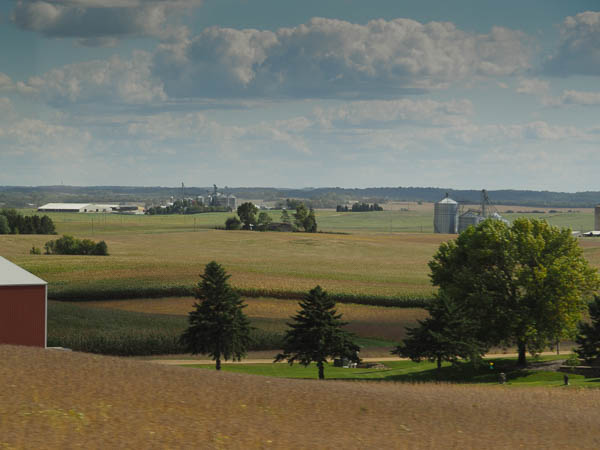
After the museum and lunch, we were back on the bus for our trip through Minnesota farmland to Red Wing where we would meet the boat. We didn't have any time to spend in Red Wing; too bad it looks like a nice place.

Most of the river towns along the Upper Mississippi River are shipping points for agricultural products produced in "America's breadbasket," which includes the states of Minnesota, Wisconsin, Iowa, Illinois, and Missouri, all of which we will visit on this voyage.
Grains produced here are sent down the river on barges for distribution throughout the United States and the world. The low water we encountered on this trip has disrupted this transport and will affect not just the local farmers, but businesses and consumers worldwide.
A 2017 study (by the National Waterways Foundation) found that barge transportation is MUCH more efficient than either rail or truck transport. The low water levels have producers in a bind with few options.
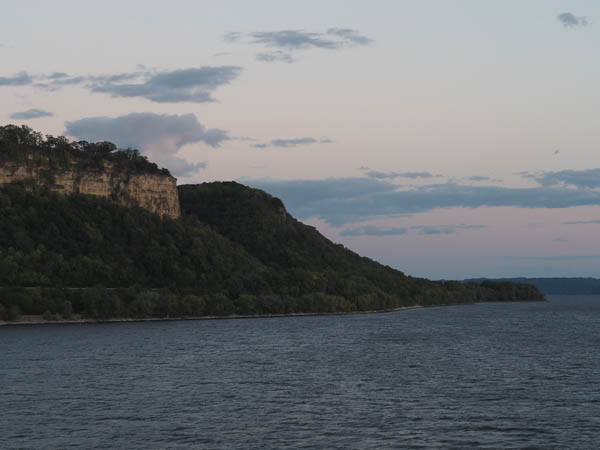
Cliff-like bluffs lined the river throughout most of our time on the Upper Mississippi. They are limestone unlike the loess bluffs that I grew up with in Vicksburg.
Click your "back" button to return to the previous page or click for our picture album.